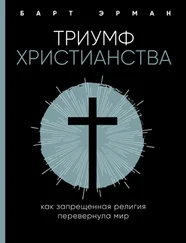Божественные установления 5.19–20. Английский перевод приводится автором по изданию: Divine Institutes 5.19–20, trans. Mary Francis McDonald, Lactantius: The Divine Institutes (Washington, DC: Catholic University of America Press, 1964).
О контрасте между Лактанцием и Фирмиком Матерном: Maijastina Kahlos, “The Rhetoric of Tolerance and Intolerance: From Lactantius to Firmicus Maternus” in Jorg Ulrich, Anders-Christian Jacobsen, and Maijastina Kahlos, Continuity and Discontinuity in Early Christian Apologetics (Frankfurt: Peter Lang, 2009), 79–96.
On the Error of the Pagan Religions 29.2. Английский перевод приводится автором по изданию: Clarence A. Forbes, Firmicus Maternus: The Error of Pagan Religions (New York: Newman Press, 1970).
De Vita 1293–1302. Английский перевод приводится автором по изданию: Harold А. Drake, Constantine and the Bishops: The Politics of Intolerance (Baltimore: Johns Hopkins Press, 2000), 406.
Troels Myrup Kristensen, Making and Breaking the Gods: Christian Responses to Pagan Sculpture in Late Antiquity (Aarhus, Denmark: Aarhus University Press, 2013).
Там же, 9.
Там же, 15.
Там же, 14.
Английский перевод приводится автором по изданию: Prudentius 2.481-84, trans. М. Clement Eagan. Цит. по: Kristensen, Making and Breaking the Gods, 21.
Amelia Robertson Brown, “Hellenic Heritage and Christian Challenge: Conflict over Panhellenic Sanctuaries in Late Antiquity,” опубликовано в издании Violence in Late Antiquity: Perceptions and Practices, H. A. Drake, ed. (Burlington, VT: Ashgate, 2006), 309.
Марк Диакон. Житие Порфирия. 76. Английский перевод цитируется автором по изданию: Mark the Deacon, Life of Porphyry 76. Цит. no: Brown, “Hellenic Heritage and Christian Challenge,” 319.
Из многочисленных работ на эту тему особенно советую: Christopher Haas, Alexandria in Late Antiquity: Topography and Social Conflict (Baltimore: Johns Hopkins Press, 1997), 159-72, 307–316.
Первая цитата принадлежит Афтонию, ученику Либания. Обе взяты мною из важного исследования: Judith McKenzie, Sheila Gibson, and A. T. Reyes, “Reconstructing the Serapeum in Alexandria from the Archaeological Evidence,” Journal of Roman Studies 94 (2004), 73-121.
Английский перевод цитируется автором по изданию: Philip Amidon, The Church History ofRufinus ofAquileia: Books 10 and 11 (New York: Oxford University Press, 1997).
Об этих событиях рассказывает Руфин в «Церковной истории», 11.
Английский перевод цитируется автором по изданию: MacKenzie et al., “Reconstructing the Serapeum,” 166.
Феодорит. Церковная история, 5.22. Английский перевод приводится автором по изданию: Christopher Haas, Alexandria in Late Antiquity: Topography and Social Conflict (Baltimore: Johns Hopkins Press, 1997), 167.
Haas, Alexandria in Late Antiquity, 168-69.
Garth Fowden, “Bishops and Temples in the Eastern Roman Empire A.D. 320–435,” Journal of Theological Studies 29 (1978), 77.
Этот эпизод пересказывает в своем исследовании Maria Dzielska, Hypatia of Alexandria, trans. F. Lyra (Cambridge, MA: Harvard University Press, 1995), 50. Cm. также: Michael A. B. Deakin, Hypatia of Alexandria: Mathematician and Martyr (New York: Prometheus, 2007), 31.
Помимо Dzielska, Hypatia, см. особенно: Edward Watts, “The Murder of Hypatia: Acceptable or Unacceptable Violence?”, опубликовано в издании Violence in Late Antiquity: Perceptions and Practices, H. A. Drake, ed. (Burlington, VT: Ashgate, 2006), 333-42.
Обсуждение этого тезиса и решительное его опровержение: Christoph Markschies, “The Price of Monotheism: Some New Observations on a Current Debate About Late Antiquity,” опубликовано в издании One God: Pagan Monotheism in the Roman Empire, Stephen Mitchell and Peter Van Nuffelen, eds. (Cambridge, UK: Cambridge University Press, 2010), глава 6.
См., например, Harold A. Drake, “Lambs into Lions: Explaining Early Christian Intolerance,” Past and Present 153 (1996), 3-36; “Intolerance, Religious Violence, and Political Legitimacy in Late Antiquity,” Journal of the American Academy of Religion 79 (2011), 193–235.
Об этих и других антииудейских законах: James Carroll, Constantine’s Sword: The Church and the Jews ; A History (Boston: Houghton Mifflin, 2001).
В отношении языческих предметов поклонения (хотя и не тех, кто им поклоняется) тот же взгляд высказывал великий богослов Августин: «Бог, вещающий истину, и предсказывает, что изображения множества ложных богов будут низвергнуты, и приказывает нам низвергать их» (Послание 91. Англ, издание: Augustine, Epistle 91). В другом месте он говорит: «Чего хочет Бог, то Бог провозглашает и заповедует» (Проповеди 14.6. Англ, издание: Augustine, Sermon 14.6). Английский перевод приводится автором по изданию: Ramsay MacMullen, Christianity and Paganism in the Fourth to Eighth Centuries (New Haven, CT: Yale University Press, 1997), 169.
Drake, “Lambs into Lions,” 35.
Фемистий. Речь 5. Английский перевод приводится автором по изданию: Peter Heather and David Mondur, eds., Politics, Philosophy and Empire in the Fourth Century: Select Orations ofThemistius (Liverpool: Liverpool University Press, 2001).
Английский перевод приводится автором по изданию: Н. de Romestin, “Memorial of Symmachus,” опубликовано в издании Nicene and Post-Nicene Fathers , second series, vol. 10, Ambrose: Select Works and Letters, Philip Schaff and Henry Wace, eds., reprint ed. (Peabody, MA: Hendrickson Publishers, 1994).
Читать дальше
![Барт Эрман Триумф христианства [Как запрещенная религия перевернула мир] [litres] обложка книги](/books/406447/bart-erman-triumf-hristianstva-kak-zaprechennaya-re-cover.webp)
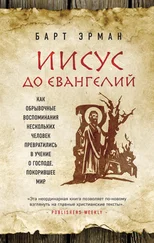

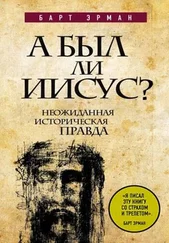

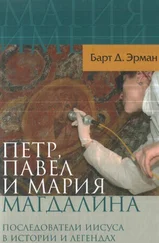
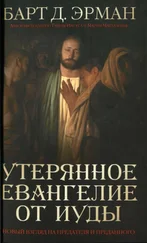
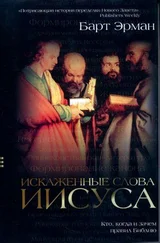

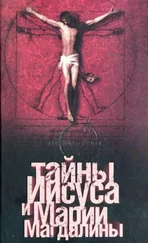
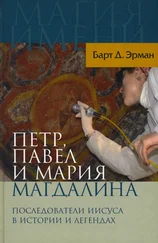
![Барт Эрман - Почему мы страдаем? [Как получилось, что в Библии не нашлось ответа на этот вопрос]](/books/406894/bart-erman-pochemu-my-stradaem-kak-poluchilos-cht-thumb.webp)
